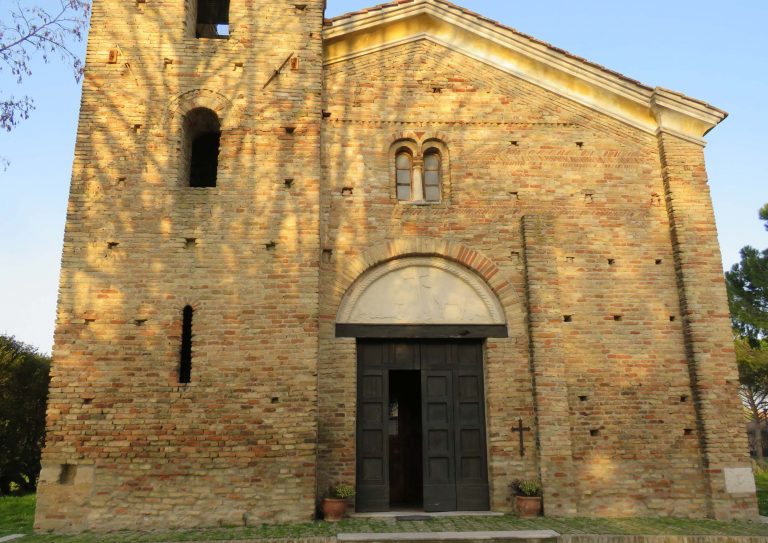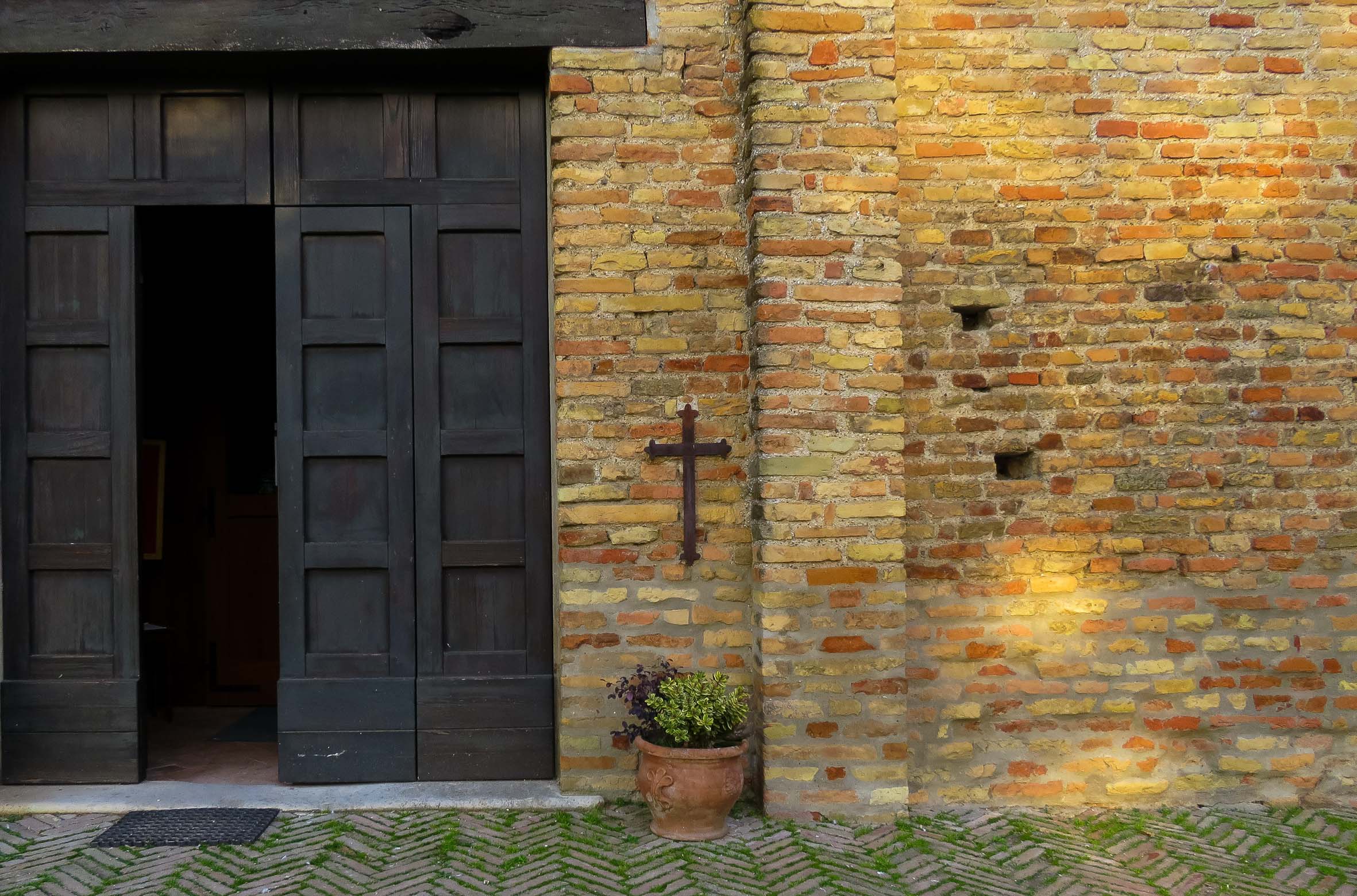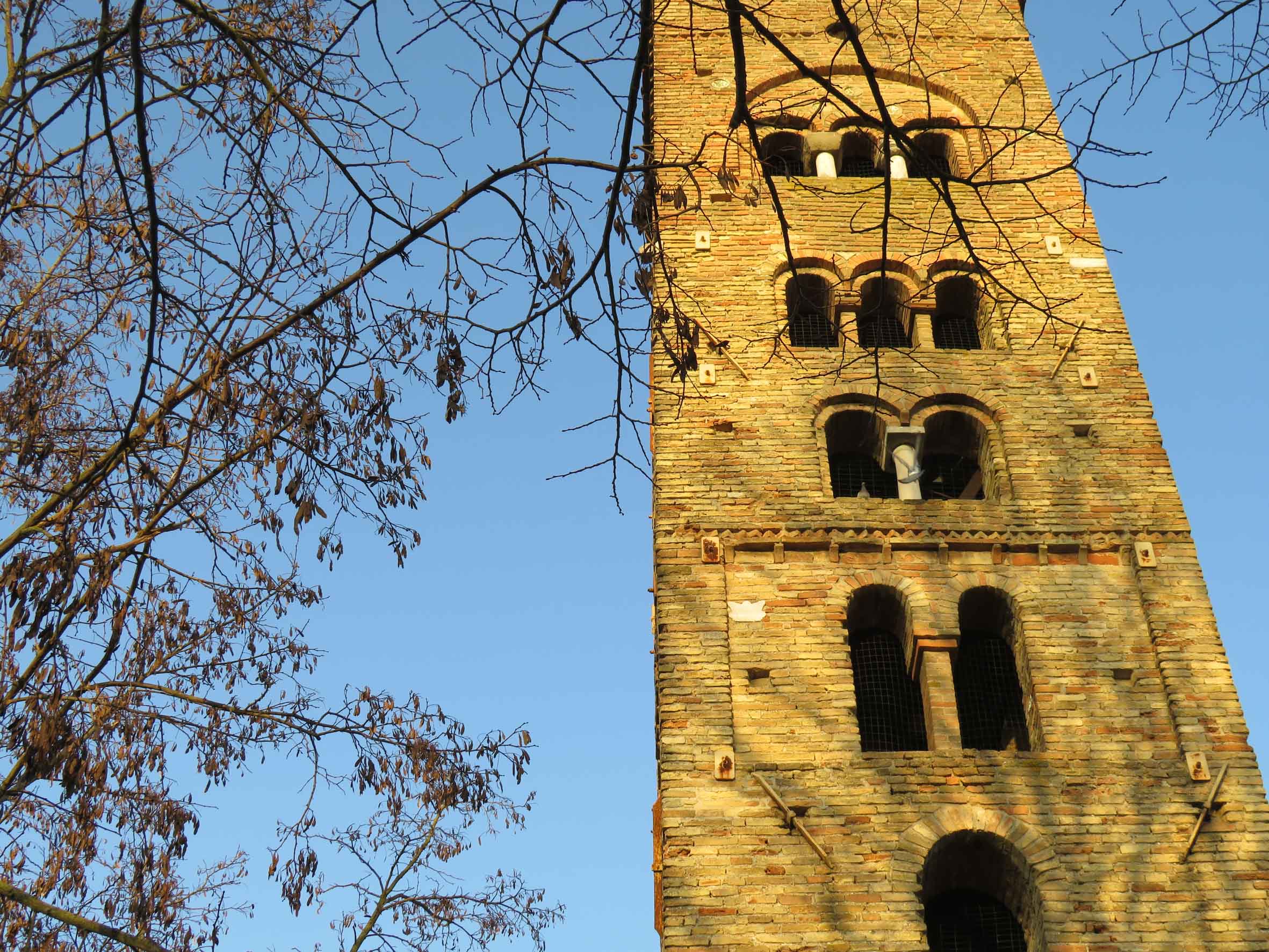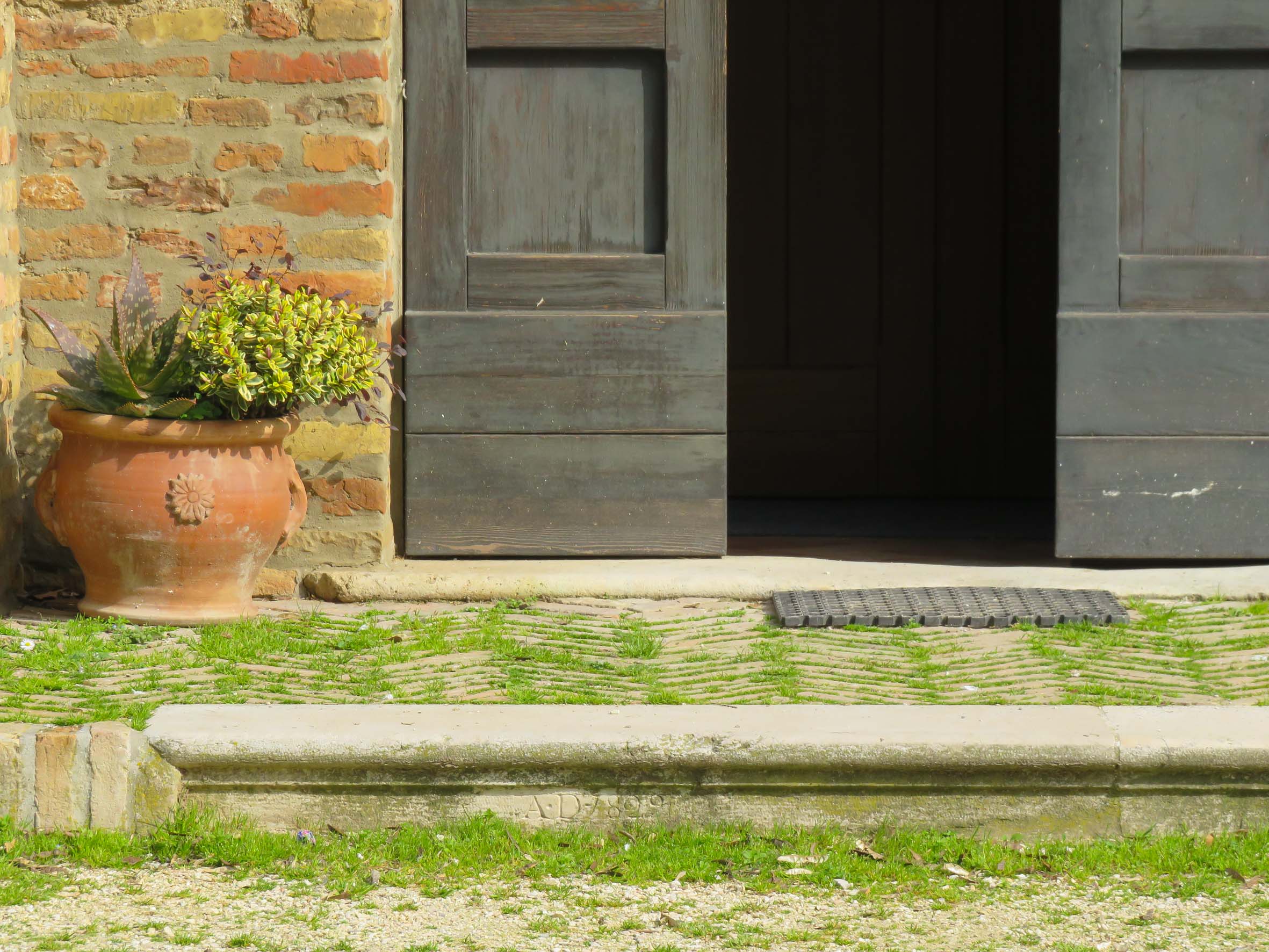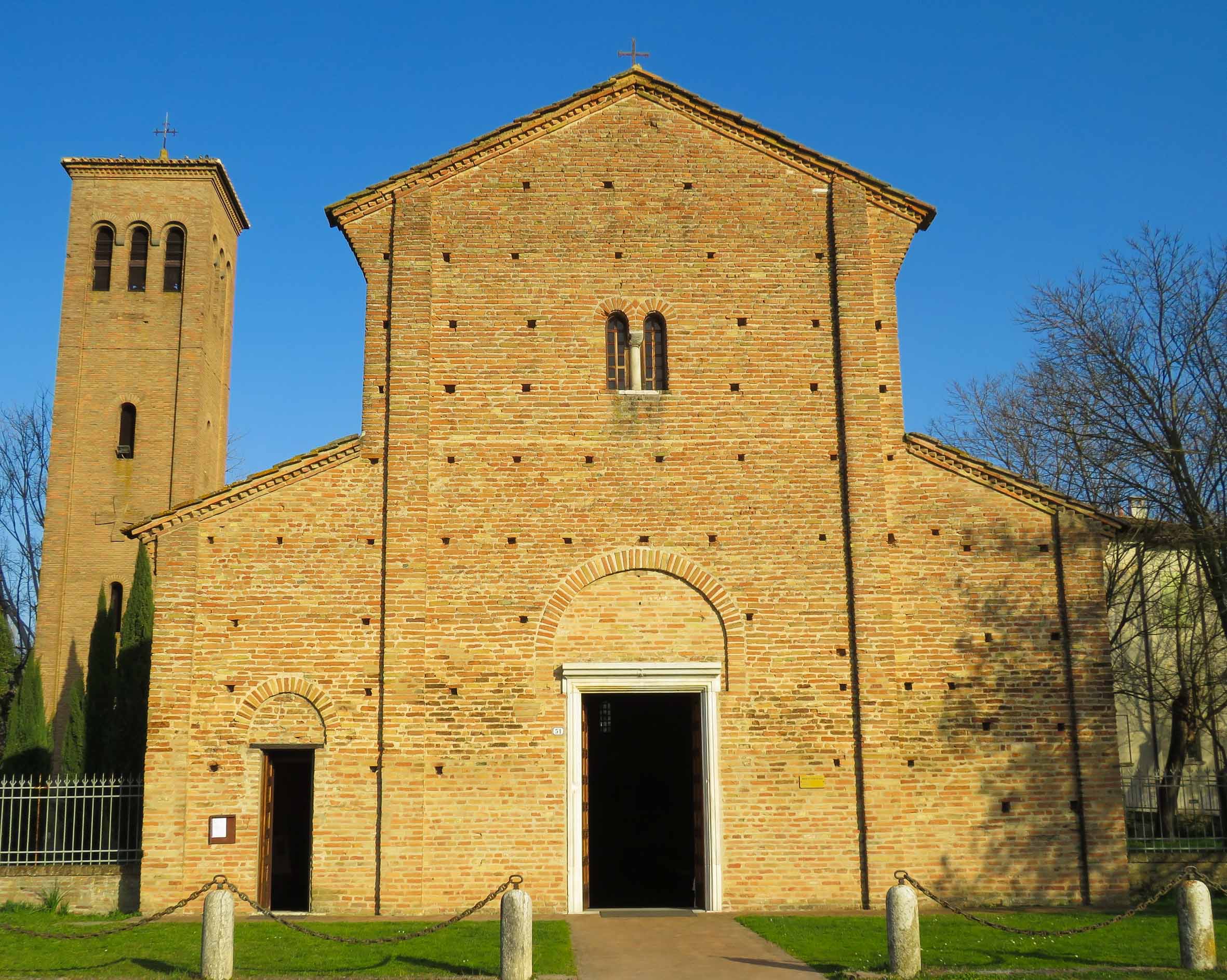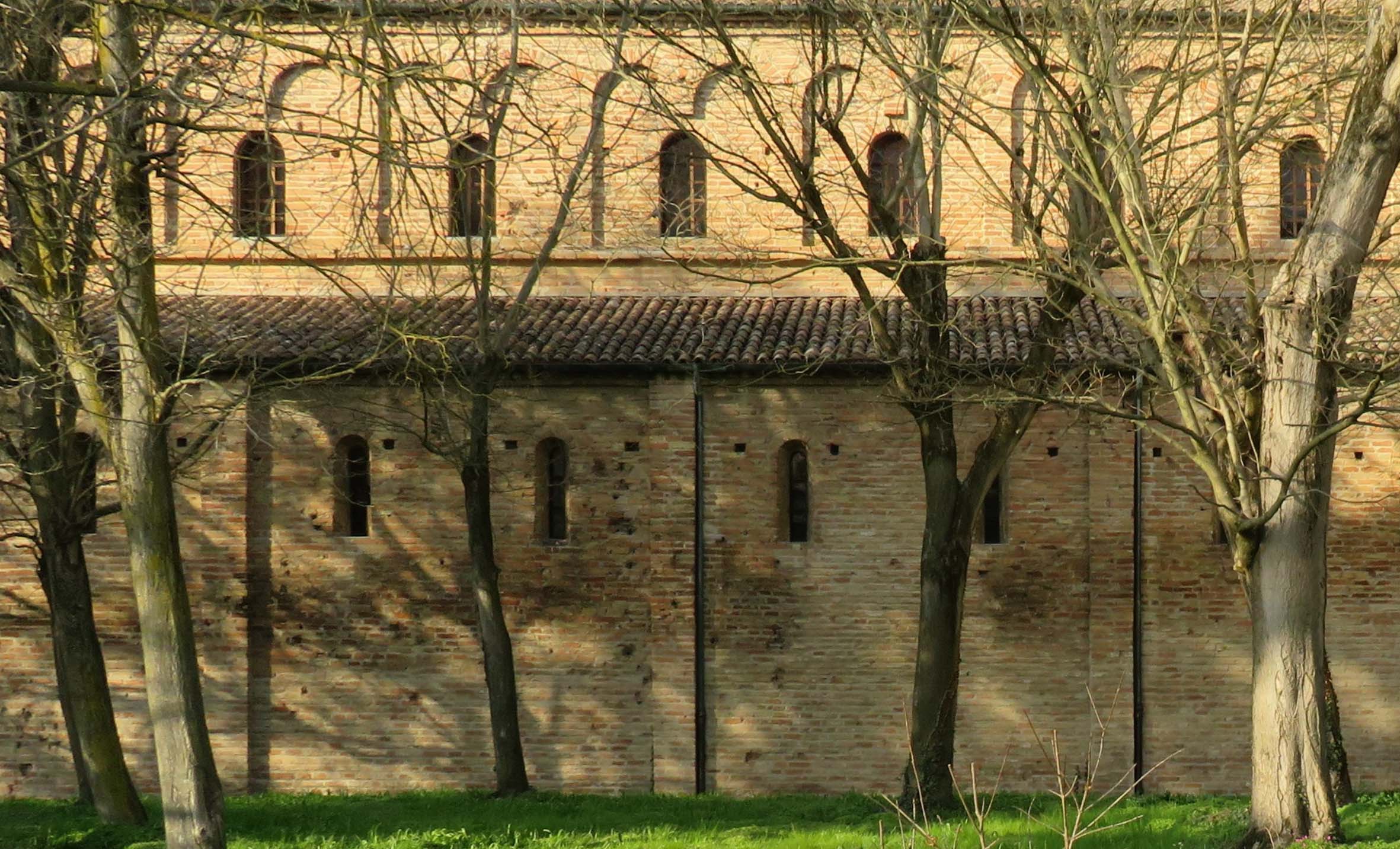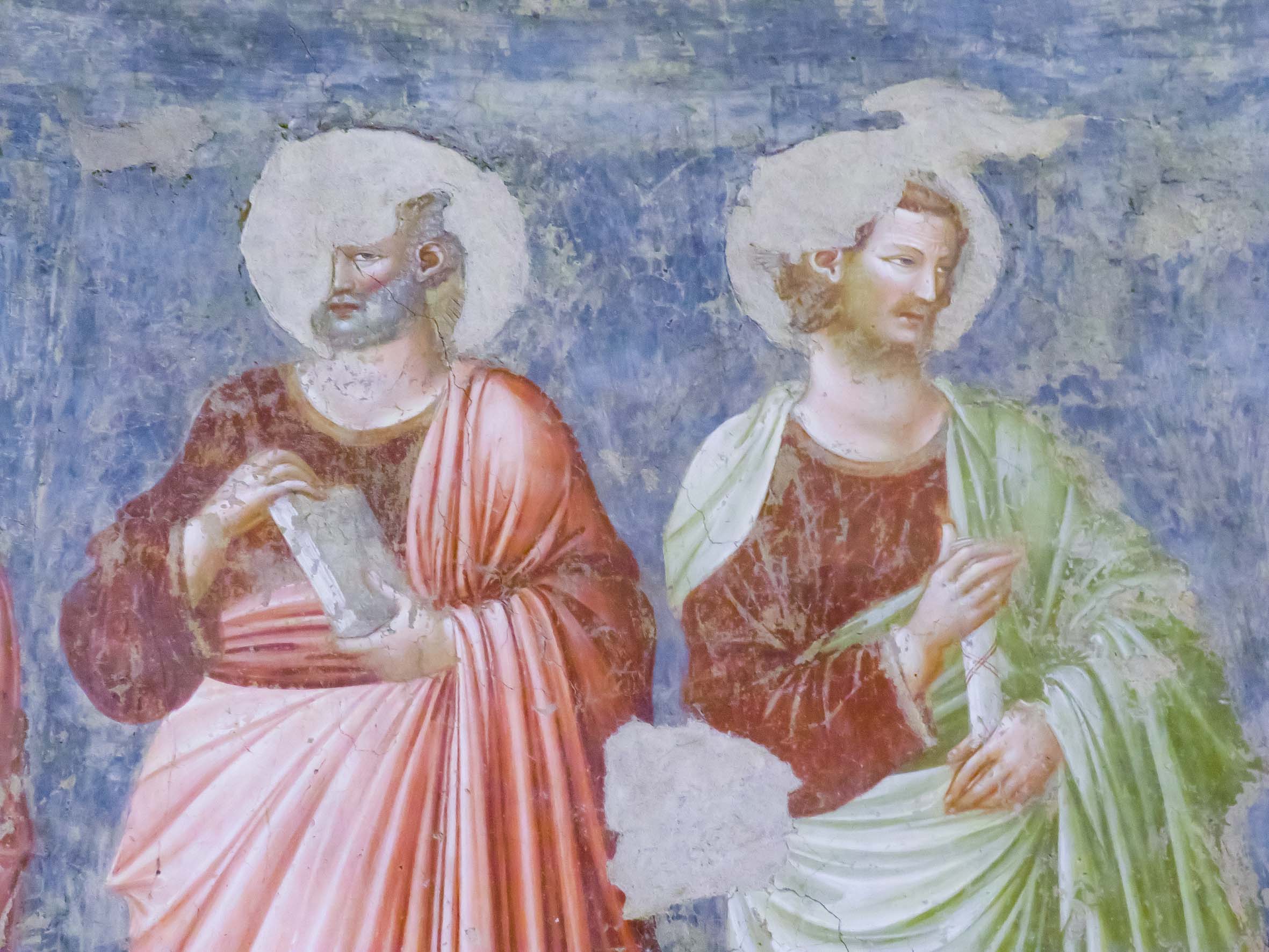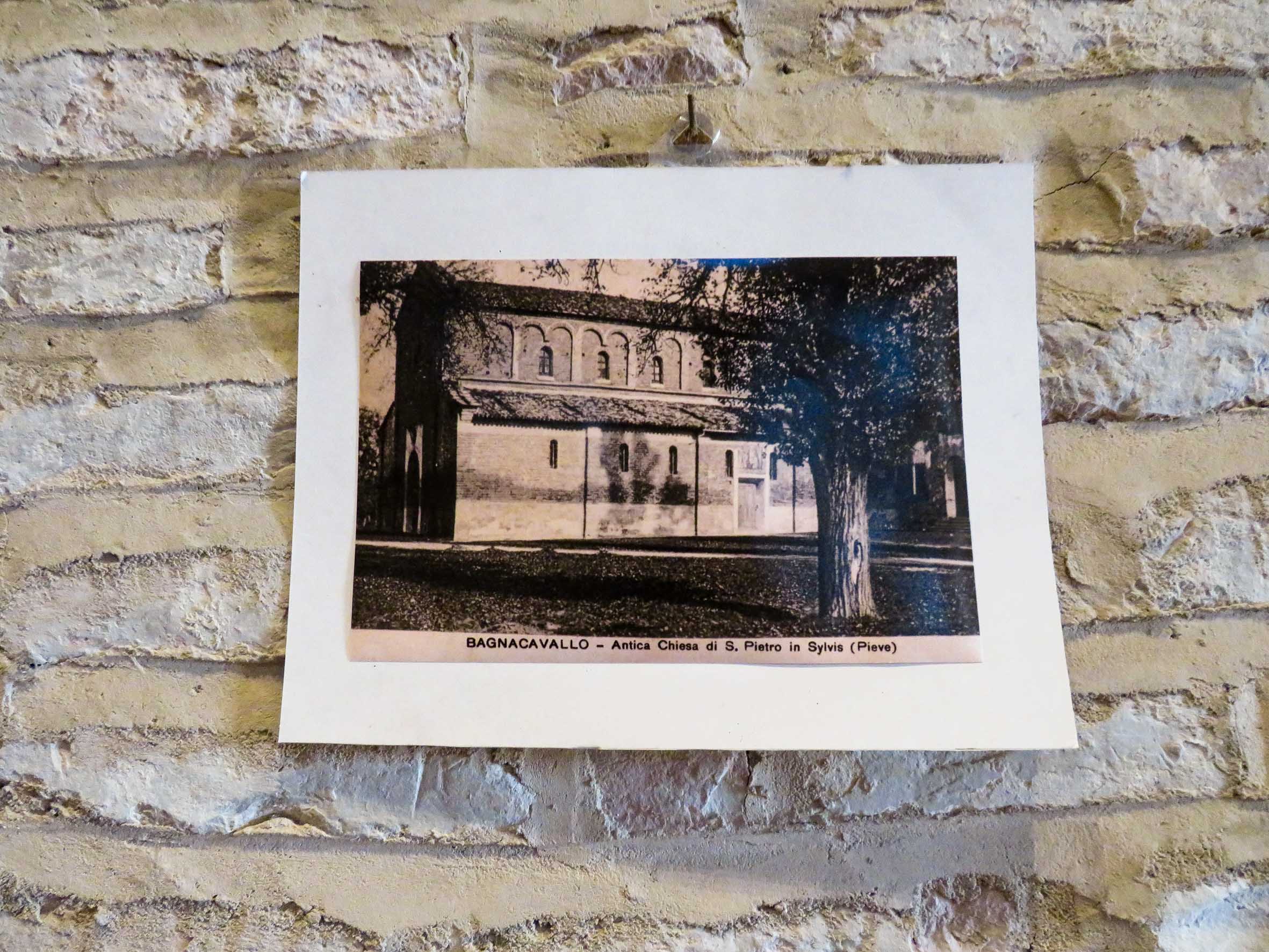Not far from Ravenna, in the near inland, there are uncommonly evocative places such as the parish churches of S. Cassiano in Decimo, in Campiano, and of S. Peter in Sylvis, in Bagnacavallo. Both founded in the Middle Ages as a centre of social and religious life, they still represent a testament to it with their contemplative, compact essential nature. While they preserve relevant traces of the local art history, they invite the visitor to slowly rediscover the territory and its identity, whose dense narrative unravels in the details they feature.
Luana Piccinini lives and work in Emilia-Romagna. Her deep commitment to the history, art, and tradition of her region has naturally led her to work as tour guide. She graduated in Conservation of the Cultural Heritage, and she is now enrolled in a master’s programme on the promotion of religious art.
La Pieve di S.Cassiano in Decimo a Campiano
A few kilometers from Ravenna, in the village of Campiano, stands the parish church of S. Cassiano in Decimo, which is located along the ancient Via Petrosa . A part of its name, Decimo, which means tenth, is related to the distance, ten miles, from the point where the ancient road route began, that is Forlimpopoli.
The worship of S. Cassiano, who, according to tradition, died as a martyr in the 4th century, was especially felt in our area and in Ravenna he was represented in the Church of S. Apollinare Nuovo’s Byzantine mosaics.
The earliest information about this church dates back to the 9th century. In the 10th century, the bell tower was built and was later called “la Bartolla”, from the fragment of a statue walled up in its structure. Also of note, are the ceramic inserts that decorate the upper part of it, and the interesting finds preserved inside the church, amongst which a milestone used as a support for the bible stand.
The parish church, which has undergone a series of changes over the centuries, preserves objects from different ages, which define its identity. The quietness, in which it is immersed, invites us to follow its thread slowly.
The church of S. Pietro in Sylvis
In the town of Bagnacavallo, along one of the paths of the territory of the so-called Bassa Romagna, stands the parish church of S. Pietro in Sylvis, one of the most important in the Ravenna area.
The earliest attestation dates back to the 9th century, and its exact dating is still debated. It was presumably built near an ancient pagan temple, and reports in its name in Sylvis, which means in the wood, the characteristic of the area where it was built.
The church, with its apse oriented to the east, as it was usual in early Christianity, reveals in its architecture the influence of the Ravenna churches. The three naves, which mark the space, are defined by masonry pillars, which still show traces of the frescoes that adorned them. The apse, on the other hand, preserves important decorations attributed to the 14th Rimini Schoolof Painting. The crypt and the marble altar and objects, preserved inside, are noteworthy.
The memories that give substance to this place, and define its history, make the church of S. Pietro in Sylvis the "Queen of the parish churches of Romagna", as Mons. Mario Mazzotti, one of the most important Ravenna scholars, once defined it.
